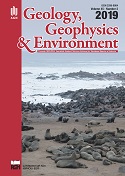Study of wind power utilization in district heating systems in the Westfjords, Iceland
Main Article Content
Keywords
Renewable Energy Sources, sector coupling, wind turbines, district heating, Thermal Energy Storage, Iceland, the Westfjords
Abstract
Some Renewable Energy Sources (RES), such as wind power, are often regarded as intermittent. That means they are not available on demand, but rather depend on external conditions e.g. such as the weather. In order to manage these resources, it is advised to combine them with energy storage or other energy sectors, what is known as “sector coupling”. This approach is set to mitigate the negative impact of unstable renewable energy sources and manage the generated surpluses. In this study, a system combining wind turbines, district heating network and short-term thermal energy storage was proposed and examined for the instance of the Westfjords, Iceland. Ísafjörður, Patreksfjörður, Bolungarvík and Flateyri are the exemplary communities with existing district heating networks, chosen to investigate the implementation of the system. A short review of the current state of the energy sector in Iceland was provided to present the local conditions. Wind potential in the described area was estimated as high in comparison with average wind turbine generation in the European Union and a few instances of wind turbines placement were analyzed in this study. For locations close to the district heating network, a long-term correlation between power generation and usage was proven. However, locating wind turbines in places with better wind conditions, provides stable output and a similar amount of energy produced by fewer generators.
Downloads
References
Duenasa P., Ramos A., Ahumadaa K.T., Olmosb L., Rivierb M. & Pérez-Arriaga J.I., 2018. Security of supply in a carbon-free electric power system: The case of Iceland. Applied Energy, 212, 443–454.
Ellabban O., Abu-Rub H. & Blaabjerg F., 2014. Renewable energy resources: Current status, future prospects and their enabling technology. Renewable and Sustainable Energy Reviews, 39, 748–764.
Fogelberg S. & Lazarczyk E., 2017. Wind power volatility and its impact on production failures in the Nordic electricity market. Renewable Energy, 105, C, 96–105.
International Electrotechnical Commission, 2014. IEC 61400-1:2005/AMD1:2010. International Standard. Wind Energy Generation Systems.
Manwell J., McGowan J.G. & Rogers A.L., 2011. Wind Energy Explained: Theory, Design and Application. 2nd ed. John Wiley & Sons.
Mauritzen J., 2013. Dead Battery? Wind Power, the Spot Market, and Hydropower Interaction in the Nordic Electricity Market. The Energy Journal, 34, 103–123.
Morris C. & Pehnt M., 2014. Energy Transition: The German Energiewende. Heinrich Böll Stiftung.
Nawri N., Petersen G.N., Björnsson H. & Jónasson K., 2013. The wind energy potential of Iceland. Veðurstofa Íslands. Report VÍ 2013-001, Icelandic Meteorological Office.
Nawri N., Petersen G.N., Björnsson H., Hahmann A.N., Jónasson K., Hasager Ch.B. & Clausen N.E., 2014. The wind energy potential of Iceland. Renewable Energy, 69, 290–299.
Ólafsson F., Björnsson B.B. & Þorbergsson L., 2014. The Icelandic Economy. Current State, Recent Developments and Future Outlook. 17th ed. Iceland Chamber of Commerce.
Ólafsson K.B., 2016. Levelized Cost of Energy (LCOE) og virkjunarkostir til umfjöllunar í 3. áfanga rammaáætlunar.
Orkustofnun Data Repository OS-2018-T006-01, 2018. Installed electrical capacity and electricity production in Icelandic power stations 2017.
Orkustofnun Data Repository OS-2018-T009-01, 2018. Primary Energy Use in Iceland 1940-2017.
Orkustofnun Data Repository OS-2018-T010-01, 2018. Proportion of energy source in space heating based on heated space.
Pérez-Arriaga I., 2017. Electricity Security of Supply in Iceland (Part II: Economic Assesment). MIT Energy Initiative.
Pérez-Arriaga I. & Batlle C., 2012. Impacts of Intermittent Renewables on Electricity Generation System Operation. Economics of Energy & Environmental Policy, 1, 2, 3–18.
Rahbar K., Xu J. & Zhang R., 2015. Real-time energy storage management for renewable integration in microgrid: An off-line optimization approach. IEEE Transactions on Smart Grid, 6 (1), 124–134.
Seal C.K. & Sherry A.H., 2016. Weibull distribution of brittle failures in the transition region. Procedia Structural Integrity, 2, 1668–1675.
Shen Z. & Ritter M., 2016. Forecasting volatility of wind power production. Applied Energy, 176, 295–308.
Sowiżdżał A. & Drabik A., 2016. Petrogeothermal energy resources within low-temperature areas of Iceland. Geology, Geophysics & Environment, 42, 4, 391–401.
Statistics Iceland, [on-line:] http://px.hagstofa.is [access: 30.12.2018].
Steinthorsson S., 2002. Catalog of Active Volcanoes of the World – Iceland [unpublished manuscript].
The World Bank, Renewable internal freshwater resources per capita (cubic meters). [on-line] https://data.worldbank.org/indicator/er.h2o.intr.pc [access: 23.07.2018].
Turkenburg W.C. et al., 2000. Renewable energy technologies. [i n:] World Energy Assessment: Energy and the Challenge of Sustainability, UNDP/UNDESA/WEC, New York, 219–267.


